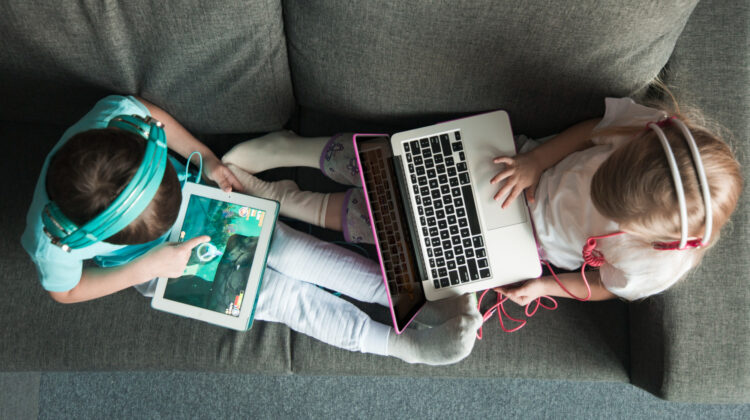
Teen Digital Detox & Analog Play: Boosting Resilience Through Creative Tech Free Rituals
Introduction: Why Teens Need Digital Balance
Today’s teenagers live in a world where digital devices are an inseparable part of daily life. From schoolwork on tablets to endless hours on social media, technology dominates their routines. While screens bring learning opportunities and entertainment, overuse can harm mental and physical well being. The key to promoting child health lies in creating balance. A digital detox, combined with creative analog play, provides teens with opportunities to recharge, explore imagination, and build resilience.
The Risks of Constant Connectivity
Excessive screen time impacts teen health in multiple ways. Studies link it to poor sleep, increased stress, sedentary lifestyles, and mental health struggles such as anxiety and depression. The constant stimulation of notifications and digital content also reduces attention spans, making it harder for teens to focus in school or engage deeply with family and friends. Addressing these risks is crucial for child health, particularly during adolescent years when habits shape long-term wellness.
What is a Digital Detox for Teens?
A digital detox does not mean banning technology entirely—it means creating intentional breaks from screens. By setting aside regular periods of time without digital devices, teens can reconnect with themselves and their surroundings. Detox rituals may include phone-free evenings, screen-free weekends, or structured activities where devices are not allowed. This practice reduces overstimulation, encourages mindfulness, and opens space for healthier lifestyle choices.
Analog Play as a Pathway to Resilience
Analog play refers to creative, hands-on activities that don’t involve digital screens. For teens, this can include drawing, painting, board games, journaling, playing music, outdoor adventures, or building projects. Such activities foster problem-solving, imagination, and emotional expression. Unlike passive scrolling, analog play actively engages the mind and body, making it a powerful tool for resilience. When framed as part of everyday child health, analog play becomes a natural antidote to digital fatigue.
Creative Rituals That Support Tech-Free Time
Parents can help teens embrace tech-free rituals by introducing engaging alternatives. Examples include:
- Family Game Nights: Board games, puzzles, or storytelling that bring families together.
- Art and Craft Sessions: Painting, clay modeling, or DIY projects that spark imagination.
- Outdoor Play: Sports, cycling, or nature walks that provide fresh air and physical exercise.
- Music and Journaling: Writing songs, keeping gratitude journals, or playing instruments to channel emotions.
When repeated consistently, these rituals create structure, helping teens integrate tech-free activities into their lifestyle without resistance.
The Role of Parents in Encouraging Balance
Parents set the tone for digital detox practices. Modeling screen-free behavior, such as putting away phones during meals or prioritizing outdoor activities, shows teens that balance is possible. Open conversations about screen time also empower teens to reflect on their own habits. Families that establish digital boundaries together reinforce the idea that tech-free rituals are not restrictions but choices that improve overall child health.
Schools and Community Support
Educational institutions and community groups can also support digital balance. Schools may integrate mindfulness sessions, outdoor learning, or creative workshops that reduce reliance on technology. Communities can host events like art fairs, sports clubs, or volunteering opportunities to provide enriching alternatives. Such collective efforts make digital detox a shared value rather than an isolated family practice.
Expert Opinions on Digital Detox and Child Health
Child health specialists emphasize that teens thrive when technology use is balanced with offline activities. Psychologists note that screen-free rituals improve self-regulation, empathy, and social skills. Pediatricians highlight that reducing evening screen time supports better sleep, which is essential for growth and emotional stability. Experts agree that analog play is not about rejecting technology but about strengthening the resilience needed to navigate both digital and real-world challenges.
Overcoming Challenges in Detox Practices
Teens may resist digital detox at first, especially when peers remain constantly online. Parents can overcome this by involving teens in planning tech-free activities, ensuring rituals feel collaborative rather than imposed. Starting small—such as 30 minutes of device-free time daily—makes the shift manageable. Encouraging friends to join in analog play can also turn detox practices into social, enjoyable experiences.
Building a Balanced Lifestyle for Teens
The most effective approach is blending digital engagement with offline rituals. Healthy routines should include:
- Limited screen time with parental guidance.
- Structured analog activities that build creativity.
- Adequate sleep supported by tech-free evenings.
- Regular outdoor play and physical activity.
This balanced lifestyle not only improves mental clarity and focus but also builds resilience, preparing teens to handle stress and change in healthy ways.
Conclusion: Resilience Through Balance
Teenagers in the digital age need more than devices to thrive—they need balance, imagination, and meaningful offline experiences. A digital detox combined with creative analog play helps teens reset, strengthen their resilience, and build a foundation for long-term well being. By integrating tech-free rituals into daily life, families can protect child health while encouraging creativity, connection, and confidence. In the end, the goal is not to eliminate technology but to empower teens to live balanced, resilient, and healthy lives.







